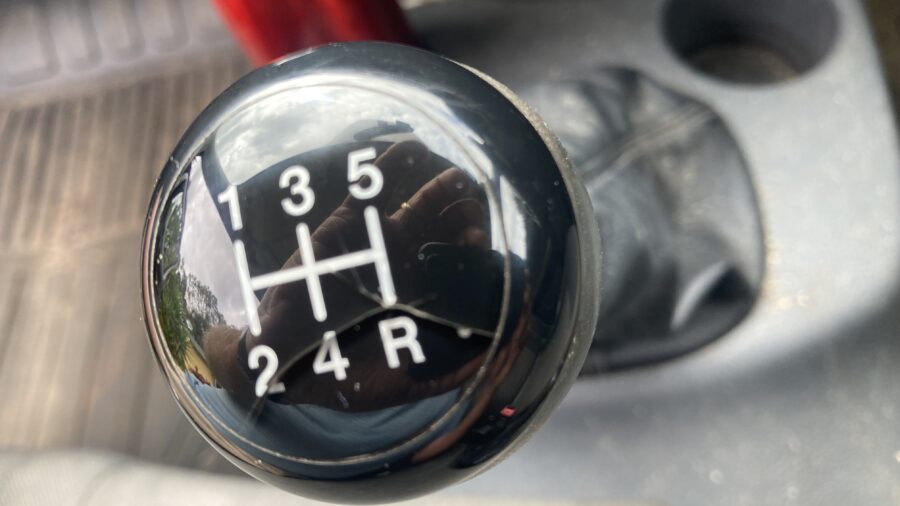One of our top 20 blogs asked: Is it safer to drive an automatic or a manual car? It was a good question then, but now automatics have become the standard. Is there still a place for the gearstick and clutch or will automatics replace manuals completely?
Manuals are no longer popular
It’s true manuals are no longer popular. In 2020, Australians bought only 5% of passenger cars and 1% of SUVs with a manual transmission. Yet 20 years ago, over a quarter of passenger car sales and more than a third of SUV sales were manuals. Even then, Australians clearly preferred automatics.
Popular marques provide many examples. Less than 5% of Toyotas sold are manuals and the Toyota Yaris and Corolla are automatic only. The latest Ford Ranger models, another Australian favourite, are automatic only. Recently, Mercedes-Benz said it will phase out manual versions from 2023.
While automatics are already popular, electric vehicles are slowly gaining ground. Electric vehicles are automatic only. However, some argue they are neither manual nor automatic because most have only one gear anyway.
Are automatics safer than manuals?
The question whether automatics are safer than manuals has another perspective today. New automatics are more likely to be equipped with safety technologies than new manuals.
Some driver assistance tech doesn’t work well with manual gearboxes. One manual version of a popular medium SUV lacks adaptive cruise control, auto high-beam, blind-spot collision-avoidance assist and rear AEB. Yet these are standard on the automatic version.
This is not to suggest an automatic is always safer to drive than a manual. An inexperienced driver in an automatic with lots of safety tech may be less safe than an experienced driver in a manual with little safety tech.
However, automatics are generally easier to drive. They continue to be more popular in Australia than, say, Europe or the UK, but things are changing.
Do they still drive manuals in the UK?
While manual cars make up 70% of the 31.7 million cars on UK roads, 2020 was the first year British drivers bought more new automatics than manuals.
- In 2000, only a quarter of new cars sold were automatic
- By 2020, 54% of new cars bought were automatic
- In 2020-21, 42% of learners took a driving test in an automatic.
Meanwhile, the British School of Motoring is ready to offer lessons in electric cars. It will teach EV-specific skills, such as one-pedal driving and range conservation.
You may wonder why bother to learn to drive in a manual now.
Why learn to drive in a manual?
In Australia, most young people seem to have no interest in learning to drive with a gear stick. Their parents are driving automatics so it’s not surprising. Even in regional areas, farm vehicles and heavy vehicles are increasingly automatic rather than manual.
There is still value in learning the skills to drive a manual car. The ability to control a clutch, listen to and change gears, and brake smoothly helps keep new drivers focused. Clearly, having hands and feet occupied makes it harder to multitask or get distracted.
- A study on the driving performance of teenage boys found manual driving kept their attention.
- UK manual drivers were more likely than automatic drivers to pass their tests, with a 45.9% pass rate compared to 39.5%, because they put in more effort.
Driving schools are still teaching learners in manuals as well as automatics. If you choose to learn in a manual, you can drive automatics too. This offers more choice and flexibility in what you drive, which could be a benefit at work.
One instructor says the advantage of a manual is you won’t have to loan your car to your mates! He says most of them will drive automatics only.
You can still love manuals
“Driving a gear stick vehicle is one of the purest forms of the marriage of man and machine”, said one manual lover. People who relate to this may become collectors of manual cars to keep the love alive.
Some drivers prefer a manual for its “driving dynamics”. They say they feel more at one with the manual vehicle because they have more control over it. Conversely, an automatic driver may just want the car to go from A to B.
It seems unlikely automatics will replace manuals completely, at least not for a long time.
When it comes to buying a green slip, the type of transmission does matter. Automatic and manual are aspects of the correct vehicle variant. Be careful to select the right vehicle variant in the greenslips.com.au calculator to get an accurate green slip price from every insurer.


your opinion matters: